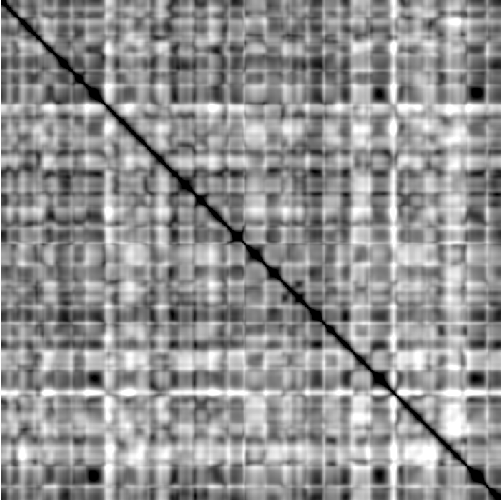14. Der greise Kopf. (The Grey Head)

Variiertes Strophenlied in c-Moll mit drei Strophen. [more]
Fourier tempogram (8 sec) correlated to deviations in rhythm and tempo. [more]
Singer: Randall Scarlata (Baritone), Piano: Jeremy Denk. Recording of a performance at the Isabella Stewart Gardner Museum, Boston.
Source, License: CC BY-NC-ND 2.0
Information about our segmentation of »14. Der greise Kopf«
Variiertes Strophenlied in c-Moll mit drei Strophen.
Dreiteilige Form: ABA' (I1 A I2 B1 | C | A I2 B2 I2 in der Feinsegmentierung);
Das Lied hat ein instrumentales Vorspiel I1, zwei instrumentale Zwischenspiele I2 und ein Nachspiel I2, das mit den Zwischenspielen identisch ist.
Der erste Teil umfasst das Vorspiel I1, das Segment A, ein Zwischenspiel I2 sowie das Segment B1 und stellt die Vertonung der ersten Textstrophe dar.
A und B1 weisen sowohl in der Harmonik als auch in der Melodik starke Unterschiede auf, sind sich rhythmisch jedoch sehr ähnlich.
Der Mittelteil (C in der Feinsegmentierung) hat ebenfalls rhythmische Ähnlichkeit mit A und B1. Hier wird die zweite Strophe des Gedichts vertont.
Der letzte Teil ist im Wesentlichen mit dem ersten Teil identisch, wobei B2 eine Variation (melodischer Art) von B1 ist. Dieser Teil entspricht der dritten Textstrophe.
Lyrics: Project Gutenberg
Tempogram
This feature corresponds to rhythmic properties of a musical piece as well as tempo. A tempogram is computed similar to a spectrogram by short-time Fourier transform or using autocorrelation function. It represents periodic occurances of high energy in the waveform and hence is used to estimate tempo and beat positions. To reduce jumps between a certain tempo value and its multiples, a cyclic variant is used where we identify all tempo multiples similar to the computation of chroma from pitch features. Subsequently, the resulting tempo features are quantized, smoothed (in temporal direction), and normalized with respect to the ℓ2-norm.
In the spirit of the transposition-invariant chroma-based SSM, we compute something similar for cyclic tempo features also. Although the properties of this matrix are not discovered yet, we present this representation to show that the transposition index carries some meaningful information. We guess that this can be used to separate information about rhythm and tempo. In this case, we use a standard HSV colormap.
Literature
- Geoffroy Peeters: Time variable tempo detection and beat marking, ICMC 2005.
- Peter Grosche, Meinard Müller, Frank Kurth: Cyclic tempogram – a mid-level tempo representation for music signals, ICASSP 2010, pp. 5522–5525.
- Peter Grosche, Meinard Müller: Tempogram toolbox: Matlab implementations for tempo and pulse analysis of music recordings., ISMIR 2011.
